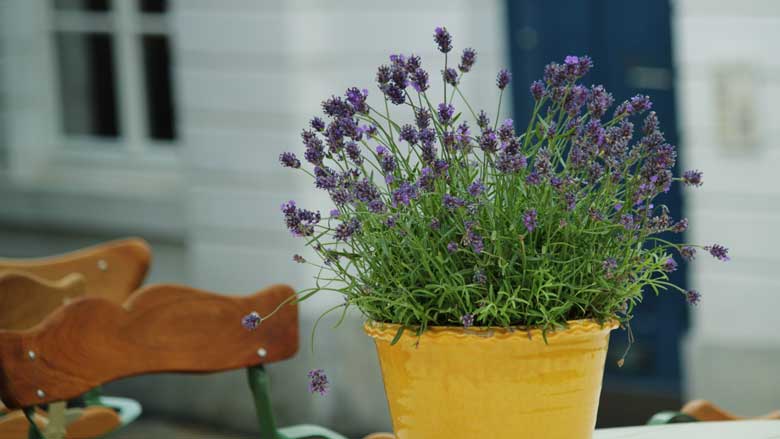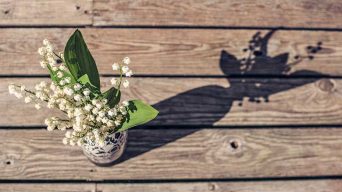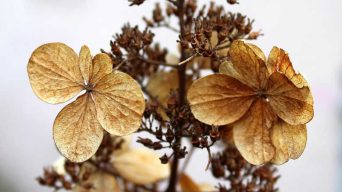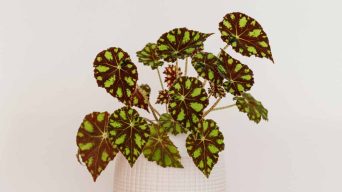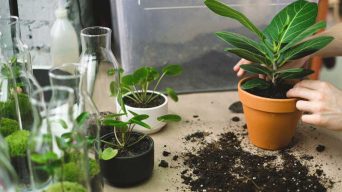Lavender plants are one of the most popular herbs to have in any home garden.
They are known for their delicate and beautiful flowers and their calming scent.
Lavender is also a versatile herb that can be used in many different ways, such as in potpourris, sachets, and even culinary dishes.
While lavender is a very easy plant to care for, one of the most common questions gardeners have is how often they should water their lavender plants.
The answer to this question is not as simple as it may seem, and it depends on several different factors.
Here is a complete guide on how often you should water lavender plants.
How Often Do You Water Lavender Plants?
The frequency of watering your lavender plants will depend on several different factors, such as the type of soil they are planted in, the weather conditions, and the size of the plant.
In general, lavender plants need to be watered about once a week.
However, if the weather is particularly hot or dry, you may need to water your lavender plants more often.
The best way to tell if your lavender plant needs to be watered is to stick your finger in the soil.
If the soil is dry about an inch below the surface, it is time to water your lavender plant.
How Often Should You Water Lavender in the Summer?
You may need to water your lavender plants more often than usual during the summer months.
The hot weather can cause the soil to dry out more quickly.
You may need to water your lavender plants every 5-7 days during the summer months, giving them a good soaking each time.
However, it is still good to check the soil before watering to ensure that the plant needs it.
Only water your lavender plants if the soil is dry to the touch.
How Often Should You Water Lavender in the Winter?
Winter is a difficult time of year for lavender.
The days are shorter, the air is colder, and the soil is often dry.
As a result, it’s essential to pay close attention to your lavender plants and make sure they’re getting the water they need.
You should water your lavender plants every 2-3 weeks during the winter months.
However, if the weather is particularly dry or the soil looks parched, you may need to give them a drink more often.
The best way to tell if your plant needs water is to stick your finger in the soil.
If the soil is dry about an inch below the surface, it is time to water your plant.
How Often Should You Water Indoor Lavender Plants?
When growing lavender indoors, it’s vital to ensure they are getting enough water.
You should water your indoor lavender plants about once a week.
However, if the air is particularly dry or the potting soil looks parched, you may need to give them a drink more often.
The place where you keep your plants can also affect how often you need to water them.
For example, if you have them in a sunny spot, they will probably need to be watered more often than in a cooler, shaded area.
To water your lavender indoors, use a watering can or a gentle shower setting on your kitchen sink sprayer to give them a good soaking.
Once the soil is saturated, allow the excess water to drain away before putting the plant back in its pot.
Let the soil dry out a bit before watering again.
How Often Should You Water Outdoor Lavender Plants?
If you have lavender plants growing outdoors, they will need less water than growing indoors.
You should only need to water them once a week or so in most cases.
However, during periods of hot, dry weather, you may need to water your plants more often.
Several factors can affect how often you should water your outdoor plants.
For example, if they are planted in well-drained soil, they will need less water than heavy, clay soil.
The weather conditions will also affect how often you need to water your plants.
If it is hot and sunny, the plants will need more water than if it is cooler and cloudy.
To water your outdoor lavender plants, use a watering can or a gentle shower setting on your garden hose to give them a good soaking.
Once the soil is saturated, allow the excess water to drain away.
Let the soil dry out a bit before watering again.
How Often Should You Water Lavender in a Pot
When growing lavender in pots, they will need more water than if they were planted in the ground.
Pots potting mix tends to dry out more quickly than the ground, so you need to water your plants more often.
You should water your potted lavender plants about once every one to two weeks.
Potted plants need less water in the winter than in the summer.
You will need to water more often in hot weather and less frequently in cool weather.
If you live in a very hot climate, you may need to water your plants every week.
If you live in a cool climate, you may only need to water them every two weeks or so.
How Often Should You Water Lavender Seeds
If you are growing lavender from seed, you will need to water the plants more often than if they were already established.
Seeds need to be kept moist to germinate, so you must water them daily until they sprout.
Once the plant seed has sprouted, you can reduce the watering frequency to every other day or so.
Once the plants are established, you can water them once a week, as needed.
How Often Should You Water Lavender After Planting
If you have just planted lavender in your garden, you will need to water it daily for the first week or so.
This is because the roots are not yet fully established, and the plants will need extra water to help them grow.
After the first week or so, you can reduce the watering frequency to every other day or so.
Once the plants are established, you can water them once a week, as needed.
How Do You Know When To Water Lavender Plants?
The best way to know when to water your lavender plants is to check the soil before watering.
The soil should be dry to the touch before you water the plant.
You can also insert your finger about 2-3 inches into the soil to check for moisture.
If the soil is dry at this depth, then the plant needs watering.
Too much water can be just as harmful to lavender plants as too little water, so it’s essential to know when a plant is thirsty and when it has had enough.
What Does an Overwatered Lavender Plant Look Like?
If you’re unsure whether or not you’re overwatering your lavender plant, there are a few telltale signs to look out for.
The leaves of an overwatered lavender plant will be wilted and yellow, and the stem may be discolored or soft to the touch.
You may also see mold or mildew on the plant or notice that the leaves are falling off.
If you see any of these signs, it’s essential to cut back on the watering frequency.
What Does an Underwatered Lavender Plant Look Like?
If you’re unsure whether or not you’re watering your lavender plant too little, there are a few telltale signs to look out for.
The leaves of an underwatered lavender plant will appear wilted, dry, and crumbly.
The stems might be weak and spindly, and the lavender flowers will be small and faded.
Increasing the watering frequency is important if you see any of these signs.
How Long Can Lavender Go Without Water
Lavender is a drought-tolerant plant, meaning it can go long periods without water.
However, that doesn’t mean you should never water your plant!
You should water your lavender regularly, especially when the weather is hot and dry.
In general, lavender plants can go about 2 to 3 weeks without water.
However, if the plants go longer than this without water, they may start to wilt and die.
So, if you’re wondering how often should you water lavender plants, the answer is about once every one to two weeks.
Of course, this may vary depending on the climate you live in and the time of year.
How Much Water Do Lavender Plants Need?
Lavender plants need to be watered deeply but not too frequently.
This means that you should water your plant until the soil is completely saturated. There is water dripping from the drainage holes in the bottom of the pot.
Once the soil has been saturated, you can allow the plant to drain for a few minutes before emptying the drip tray.
It’s important not to let your lavender plant sit in water, as this can cause root rot.
If you’re unsure how much water your plant needs, it’s best to err on the side of too little rather than too much.
A good rule of thumb is to give your plant about 1 inch of water per week.
This can be adjusted depending on the climate and the time of year.
How Do You Water Lavender Plants
As any gardener knows, watering lavender plants can be a tricky business. Too much water and they can drown; too little, and they can wilt and die.
This is especially true of lavender plants, which require careful watering to thrive.
Here are a few tips to help you keep your lavender plants healthy and hydrated:
- Water in the morning. This gives the plants time to absorb the water before the heat of the day sets in.
- Check the soil before you water it. Make sure the soil is dry to the touch before you add any water.
- Give your plants a deep watering. Water the plants slowly and deeply until the water seeps out of the drainage holes in the bottom of the pot.
- Don’t let the plants sit in water. Be sure to empty any catch trays or saucers after watering, as standing water can damage the roots of the plant.
- Water at the base of the plant. Avoid getting water on the plant’s leaves, as this can lead to fungal diseases.
- Use lukewarm water. Hot or cold water can shock the plants and damage their roots.
By following these simple tips, you can ensure that your lavender plants get the right amount of water.
Final Thoughts
It’s essential to keep an eye on your plants and water them when needed.
Depending on the size of your plant, the temperature, and the humidity, you may need to water your lavender every day or every other day.
If you’re not sure how often to water your lavender, start by watering it once a week and then adjust as needed.
Lavender is a tough plant that can tolerate some neglect, but if you want it to thrive, be sure to give it the attention it needs.
With proper care, your lavender plant will bloom beautifully for years to come.

